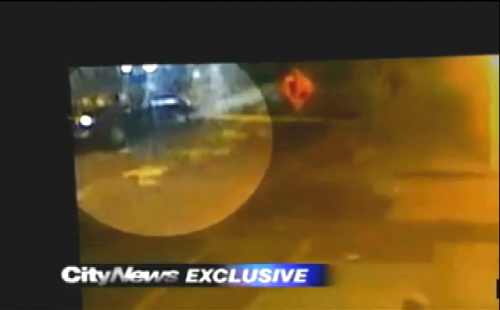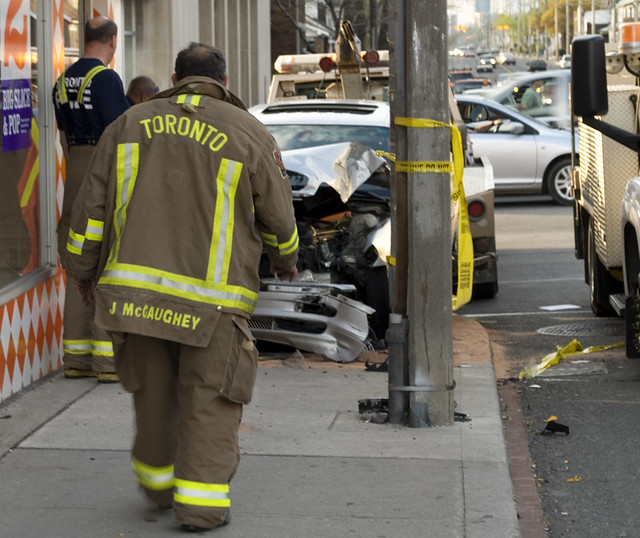
Bob Mionske, a cycling lawyer, author of Bicycling & the Law, and contributor to Bicycling magazine, weighs in on the incident of road rage and death involving Michael Bryant, former Ontario Attorney General, and Darcy Sheppard, now deceased bike courier. Despite the work of Bryant's PR firm, Navigator Ltd, feeding the prejudices of newspapers such as the Ottawa Citizen or the Toronto Sun (with the help of their Twitter account @bryantfacts), there was an amazing amount of corroborating evidence from witnesses and security cameras that make it quite hard to spin it so that Bryant appears to be just an innocent victim. Rather we know that Bryant rammed Sheppard out of the way before fleeing the scene while Sheppard gave chase:
So to set the record straight, here’s what really happened.
The night of August 31, Darcy Allan Sheppard was on his bike on Bloor Street, riding home from his fiancee’s apartment. It was 9:45 p.m. As he approached a traffic light, he passed to the left of a Saab convertible that we now know was Michael Bryant’s. After passing Bryant, who was stopped at the light, Sheppard cut in front of his car and also came to a stop. Shortly thereafter, as the light turned green, Bryant drove forward, perhaps bumping Sheppard’s wheel. Sheppard turned his head back, in Bryant’s direction. Witnesses reported that when the light turned green, there was a toot of the horn from Bryant, and a shout to “get moving,” followed—perhaps—by a return shout from Sheppard. Then, incredibly, Bryant hit the gas, pushing Sheppard forward into the intersection, knocking him off his bike. As Sheppard struggled to get to his feet, Bryant backed up, stopped, turned his wheel and began to drive past Sheppard as he sped away.
Sheppard gave chase, grabbing onto Bryant’s car as it sped by. Witnesses reported hearing shouting, and noted that Bryant was “very, very angry.” They also reported that as Bryant sped down the street with Sheppard clinging to his car, he was driving on the wrong side of the street, at about 60 miles per hour, driving up onto the sidewalk, driving against the trees and posts and newspaper boxes lining the street in what they reported appeared to be an attempt to brush Sheppard off his car. Down the street 100 yards, Sheppard was slammed into a mail collection box, and crumpled into a heap in the street as Bryant’s rear wheels ran over him. Witnesses reported that Sheppard, who lay in the street bleeding heavily from his nose and mouth, attempted to get up, but was advised to remain still until an ambulance arrived. Bryant continued driving down the street to the end of the block, before turning in to the driveway of a luxury hotel, where he finally stopped his car.
This is not spin. It is not supposition. It is not rumor. It is fact. We know this, because remarkably, the incident was captured on security cameras, which corroborated the eyewitness accounts . Anonymous spin doctors can suggest news leads and story angles to divert media and public attention, and anonymous internet comments can invent fantasy versions of what actually happened, but the camera doesn’t lie.
And the camera shows that on the night of August 31, Michael Bryant used his car to ram Darcy Sheppard out of his way, before fleeing the scene as Sheppard gave chase on foot. Moments later, Darcy Allan Sheppard lay dying on a Toronto street as Michael Bryant sped away.

